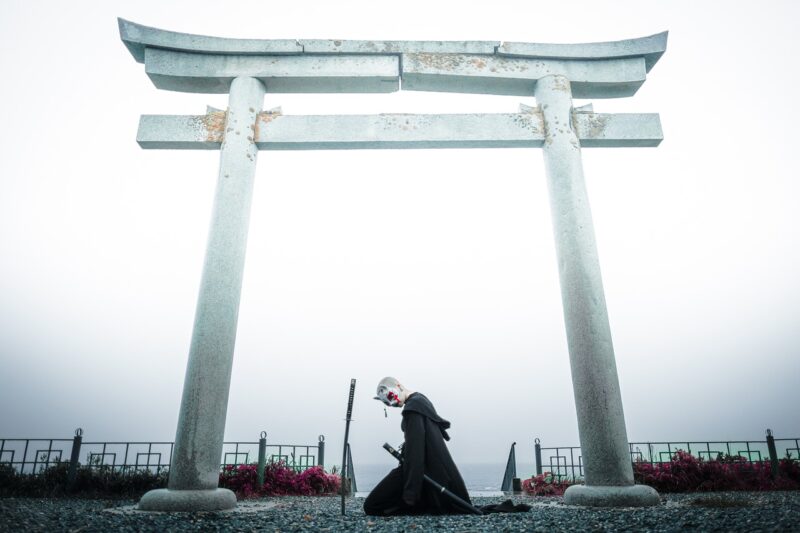
The term ‘samurai’ conjures images of noble warriors clad in armor, wielding swords, and displaying an unrivaled code of honor. These legendary figures have long been a source of fascination in both Japanese and Western cultures. Their history is rich and complex, intertwining themes of duty, loyalty, and martial excellence.
1. The Origins of the Samurai
The history of the samurai dates back to the Heian Period (794-1185 AD) when Japan was experiencing political instability and a struggle for power among aristocratic clans. The word ‘samurai’ itself originated from the term ‘saburau,’ meaning to serve. The earliest samurai were not the noble warriors we imagine today but rather the servants of powerful nobles (daimyos) who managed their estate and protected their lands.
Over time, as the central government’s power weakened, these local warriors began to build their own armies and assert control over the land, marking the transition from servants to sovereign warriors. By the late 12th century, during the Kamakura Period, the samurai had established themselves as a distinct social class.
2. The Rise of the Samurai Class
The establishment of the Kamakura Shogunate by Minamoto no Yoritomo in 1192 marked a significant turning point in Japanese history. The samurai became the ruling class, tasked with maintaining order, collecting taxes, and guarding their territories. This period saw the codification of the samurai’s social status as the elite warrior class, separate from farmers and artisans.
During the feudal era, Japan was fragmented into numerous clans, and samurai served as the military backbone of these regional powers. They adhered to a strict code of conduct known as Bushido, which emphasized loyalty, honor, and personal courage. This code served not only as a guide for behavior in battle but also as a philosophical underpinning for how samurai were expected to conduct their lives.
3. Bushido: The Way of the Warrior
One of the defining aspects of samurai culture is Bushido — literally, ‘the way of the warrior.’ This ethical code shaped the lives of samurai and encompassed various virtues, including:
- Loyalty: The samurai were expected to remain loyal to their lord and clan, even unto death.
- Honesty: Truthfulness was paramount, and deceit was frowned upon among samurai ranks.
- Courage: Fearlessness in battle and the ability to face death with dignity were considered the hallmarks of a true samurai.
- Respect: Samurai were taught to respect their opponents and allies alike, embodying a sense of honor in all interactions.
Bushido evolved over time, absorbing confucian ethics and zen Buddhist philosophies, which emphasized mindfulness and meditation. This melding of ideas helped shape a unique warrior ethos that remains revered in Japan today.
4. The Role of Samurai in Japanese Society
While samurai are often glorified for their martial prowess, their roles extended into administrative and cultural arenas. Many samurai served as bureaucrats, overseeing the governance of their domains, collecting taxes, and adjudicating legal disputes. They became instrumental in promoting education, arts, and religion.
As the Edo Period (1603-1868) ushered in peace and stability, the role of the samurai began to shift. With war but a distant memory, many samurai took up roles as scholars, poets, and artists, contributing to the rich cultural fabric of Japan. This period also saw the societal stratification solidified through the rigid caste system that placed samurai at its pinnacle.
5. The Decline of the Samurai
The Meiji Restoration in 1868 marked the end of the samurai era. As Japan sought to modernize and centralize its government, the traditional samurai class faced obsolescence. The new government abolished the samurai’s privileges, including their right to carry swords, and sought to create a conscript army.
Samurai were replaced by a modern military system that emphasized professionalism and a national army, free from the feudal allegiances that had defined Japan’s social structure for centuries. Many former samurai struggled to adapt to the new realities of a rapidly changing society, leading to social upheavals and uprisings, such as the Satsuma Rebellion in 1877.
6. The Legacy of the Samurai
Despite their decline, the legacy of the samurai endures in contemporary Japanese culture. The ideals of Bushido continue to influence Japanese ethics and martial arts, and samurai imagery is prevalent in literature, film, and art. Films like Akira Kurosawa’s ‘Seven Samurai’ and the countless anime and manga depicting samurai heroes reflect this enduring fascination.
Samurai arts, such as Kendo and Iaido, preserve the techniques and philosophies of these historic warriors, allowing new generations to connect with their rich heritage. The samurai’s deep sense of honor, loyalty, and discipline remains a source of inspiration for many, both in Japan and around the globe.
Conclusion
The history of the samurai is a testament to the dynamic nature of Japanese culture, reflecting the values, fears, and aspirations of the people throughout the ages. From their humble beginnings as servants to their evolution as the embodiments of honor and discipline, the story of the samurai is one of transformation and legacy that continues to resonate today.
As we explore this rich tapestry of history, we gain insight into what it means to pursue honor and integrity – principles that, though centuries old, remain timeless and relevant in our contemporary world.







